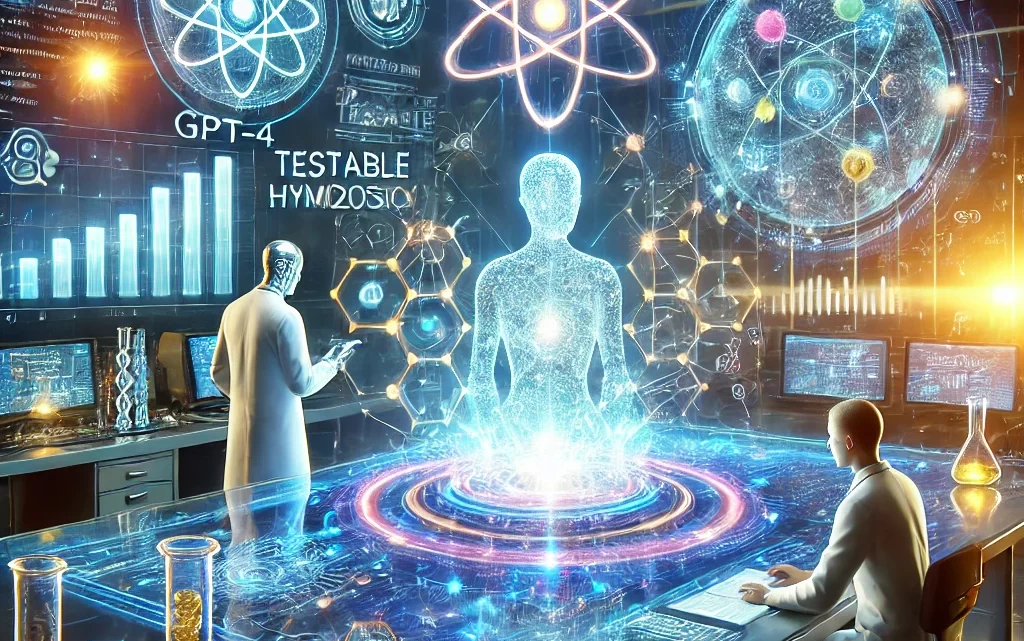
What is Bioinformatics?
May 17, 2023What is bioinformatics in simple words?
Bioinformatics is defined as the application of tools of computation and analysis to the capture and interpretation of biological data. It is an interdisciplinary field, which harnesses computer science, mathematics, physics, and biology
What do you study in bioinformatics?
Bioinformatics combines computer programming, big data, and biology to help scientists understand and identify patterns in biological data. It is particularly useful in studying genomes and DNA sequencing, as it allows scientists to organize large amounts of data
Introduction to Bioinformatics
Bioinformatics is a multidisciplinary field that combines biology, computer science, and statistics to analyze and interpret biological data. It involves the development and application of computational methods and tools to gather, store, organize, and analyze large volumes of biological data, such as DNA sequences, protein structures, gene expression patterns, and more.
The main goal of bioinformatics is to extract meaningful information from biological data to gain insights into various biological processes, understand the relationships between genes and proteins, and explore the underlying mechanisms of diseases. Bioinformatics plays a crucial role in genomics, proteomics, evolutionary biology, drug discovery, and personalized medicine.
Bioinformatics utilizes various computational techniques, including algorithms, data mining, machine learning, and statistical modeling, to process and analyze biological data. It involves tasks such as sequence alignment, gene expression analysis, protein structure prediction, functional annotation, comparative genomics, and systems biology.
Researchers and bioinformaticians in this field use specialized software and databases to store and retrieve biological information. They also develop algorithms and software tools to analyze and interpret the data, enabling researchers to make new discoveries and generate hypotheses for further experimental validation.
Overall, bioinformatics has revolutionized the way biological research is conducted by enabling scientists to extract valuable insights from vast amounts of biological data and accelerate discoveries in fields such as genetics, molecular biology, and medicine.
Definition of Bioinformatics
Bioinformatics Definition -General view
Bioinformatics derives knowledge from computer analysis of biological data. These can consist of the information stored in the genetic code, but also experimental results from various sources, patient statistics, and scientific literature. Research in bioinformatics includes method development for storage, retrieval, and analysis of the data. Bioinformatics is a rapidly developing branch of biology and is highly interdisciplinary, using techniques and concepts from informatics, statistics, mathematics, chemistry, biochemistry, physics, and linguistics. It has many practical applications in different areas of biology and medicine.
Roughly, bioinformatics describes any use of computers to handle biological information. In practice the definition used by most people is narrower; bioinformatics to them is a synonym for “computational molecular biology”- the use of computers to characterize the molecular components of living things.
Bioinformatics Definition -Personal view
The mathematical, statistical, and computing methods that aim to solve biological problems using DNA and amino acid sequences and related information.
The Loose definition
There are other fields-for example medical imaging / image analysis which might be considered part of bioinformatics. There is also a whole other discipline of biologically inspired computation; genetic algorithms, AI, neural networks. Often these areas interact in strange ways. Neural networks, inspired by crude models of the functioning of nerve cells in the brain, are used in a program called PHD to predict, surprisingly accurately, the secondary structures of proteins from their primary sequences. What almost all bioinformatics has in common is the processing of large amounts of biologically derived information, whether DNA sequences or breast X-rays.
Bioinformatics definition – Organization / commitee
Bioinformatics definition by bioinformatics definition Committee, National Institute of Mental Health released on July 17, 2000 (source: http://www.bisti.nih.gov/ ) (1)
The NIH Biomedical Information Science and Technology Initiative Consortium agreed on the following definitions of bioinformatics and computational biology recognizing that no definition could completely eliminate overlap with other activities or preclude variations in interpretation by different individuals and organizations.
Bioinformatics: Research, development, or application of computational tools and approaches for expanding the use of biological, medical, behavioral or health data,including those to acquire, store, organize, archive, analyze, or visualize such data.
Computational Biology: The development and application of data-analytical and theoretical methods, mathematical modeling and computational simulation techniquesto the study of biological, behavioral, and social systems.
The National Center for Biotechnology Information (NCBI 2001) defines bioinformatics as “Bioinformatics is the field of science in which biology, computer science, and information technology merge into a single discipline.There are three important sub-disciplines within bioinformatics: the development of new algorithms and statistics with which to assess relationships among members of large data sets; the analysis and interpretation of various types of data including nucleotide and amino acid sequences, protein domains, and protein structures; and the development and implementation of tools that enable efficient access and management of different types of information.”
Bioinformatics- Definition (As submitted to the Oxford English Dictionary)
(Molecular) bio informatics: bioinformatics is conceptualising biology in terms of molecules (in the sense of Physical chemistry) and applying informatics techniques(derived from disciplinessuch as applied maths, computer science and statistics) to understand andorganise the information associatedwith these molecules, on a large scale. Inshort, bioinformatics is a managementinformation system for molecular biology and has many practical applications.
(Source: What is bioinformatics? A proposed definition and overview of the field. NM Luscombe, D Greenbaum, M Gerstein (2001) Methods Inf Med 40: 346-58)
Importance of Bioinformatics in the field of biology and genomics
Bioinformatics plays a crucial role in the fields of biology and genomics, driving research advances and expanding our comprehension of intricate biological processes. Bioinformatics enables the analysis and interpretation of enormous quantities of genomic information by combining computational tools, algorithms, and biological data. It aids in the sequencing, assembly, and annotation of the genome, thereby facilitating the identification of genes, regulatory elements, and functional regions. Using bioinformatics, comparative genomics studies reveal evolutionary relationships and provide insight into the genetic basis of traits and diseases. Using bioinformatics, functional genomics, structural biology, and systems biology are able to decipher gene expression patterns, protein structures, and complex biological networks. In addition, bioinformatics enables personalised medicine and precision genomics by analysing genomic variations and their effect on drug response, thereby enabling treatments that are tailored to individual genetic profiles. With its continuous development, bioinformatics has the potential to facilitate revolutionary discoveries and further revolutionise the fields of biology and genomics.
Role of computer science and technology in Bioinformatics
Computer science and technology play an essential role in bioinformatics, contributing to its development and growth. The exponential growth of biological data necessitates the use of computational tools and algorithms for managing, analysing, and interpreting vast quantities of information. The application of computer science principles, such as data mining, machine learning, and artificial intelligence, enables the extraction of insightful information from complex biological datasets. High-performance computing enables the rapid processing of vast amounts of genomic data, thereby facilitating tasks such as genome sequencing, assembly, and annotation. In addition, computer algorithms and statistical models facilitate sequence alignment, the prediction of protein structure, and network analysis, resulting in a deeper comprehension of biological systems. In addition, the development of bioinformatics software and databases enables researchers to efficiently access and share biological data. The integration of computer science and technology in bioinformatics enables researchers to tackle biological challenges, unravel genetic mysteries, and fuel innovation in fields like personalised medicine and agricultural biotechnology.
Overview of the application areas of Bioinformatics
Bioinformatics has applicability in multiple fields, revolutionising research and discoveries in a variety of disciplines. It facilitates genome sequencing, assembly, and annotation in genomics, thereby revealing the genetic blueprint of organisms. Using bioinformatics, functional genomics analyses gene expression patterns, protein structures, and metabolic pathways to shed light on cellular processes. Bioinformatics plays a crucial role in protein structure prediction, molecular coupling, and drug design in structural biology. Using bioinformatics, systems biology builds biological networks and analyses complex interactions within biological systems. Bioinformatics has applications in personalised medicine through the analysis of genomic variations and the customization of treatments based on an individual’s genetic profile. Bioinformatics contributes to crop enhancement, genetic engineering, and the comprehension of plant and animal genomics in agricultural biotechnology. Bioinformatics also contributes to evolutionary biology, epidemiology, and environmental studies, among others. Its diverse applications demonstrate its importance in advancing scientific knowledge and addressing real-world challenges in a variety of disciplines.


















